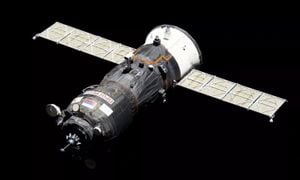NASA's Boeing Starliner mission has faced unexpected delays, leaving astronauts Butch Wilmore and Suni Williams aboard the International Space Station (ISS) longer than initially planned. Their June 5 launch, intended to last about one week, has now extended potentially up to eight months due to technical issues.
During their flight to the ISS, some of Starliner's thrusters failed to perform as expected, coupled with leaks discovered in the spacecraft's helium system. Engineering teams from NASA and Boeing are actively conducting thruster tests and thorough data reviews to address these challenges.
This delay stems from NASA's commitment to safety, recalling the lessons learned from the Space Shuttle Columbia disaster. The agency is closely monitoring the situation and gathering data to make informed decisions about the astronauts' safe return.
Nasa plans to conduct two significant reviews—the Program Control Board and the Agency Flight Readiness Review. The aim is to determine the safest path for returning Wilmore and Williams from their extended mission.
Some concerns have been raised about the astronauts possibly being stuck aboard the ISS without immediate return options, but NASA insists this is not the case. Starliner remains their primary transportation option, but there are contingency plans should any emergencies arise.
NASA's Commercial Crew Program is set up to maintain two separate human spaceflight systems, ensuring redundancy should one encounter complications. This approach helps guarantee the safety and continuity of crewed missions to the ISS.
For now, Wilmore and Williams are performing scientific research and maintenance activities with the Expedition 71 crew. They continue to monitor Starliner’s systems alongside conducting various science experiments and maintenance tasks during this extended stay.
A backup plan includes possibly utilizing SpaceX's Crew Dragon for their return if necessary. If this route is taken, it would require adjustments to the Crew-9 mission schedule, with fewer astronauts being launched back to Earth.
Hydration, oxygen, food, and essentials are assured for the astronauts aboard the ISS. The station is stocked with supplies, and regular resupply missions continue to bring fresh supplies.
While there are no urgent plans to bring them back immediately, NASA does explore all possible strategies as they continue evaluating Starliner's propulsion problems. Wilmore and Williams are well-prepared for their extended stay, having previously completed long-duration missions aboard the ISS.
Concerns have also surfaced about the astronauts' mental and physical well-being during this time. Sunita Williams has reportedly experienced some eyesight issues, prompting additional urgency for NASA to finalize return plans.
The engineers are gathering as much data as possible to facilitate decisions but remain optimistic about Starliner's eventual performance. The aim is to stabilize the spacecraft and ready it for safe ascent back to Earth's atmosphere.
One of the significant risks facing the astronauts is the possibility of malfunctioning thrusters rendering Starliner unable to re-enter properly. If the spacecraft can't re-enter at the correct angle, it could potentially leave the crew stranded with only enough oxygen for about 96 hours.
NASA's decisions carry substantial weight due to past experiences with similar delays. The agency ensures thorough evaluations are made based on diverse scenarios, even considering the most extreme outcomes.
A failure during re-entry could cause the Starliner to either burn up or remain trapped indefinitely. The stakes have never been higher for the astronauts living and working aboard the ISS during this unforeseen delay.
Despite the difficulties, the astronauts have stayed connected with family and friends through emails and video calls. This provides them with some comfort and reassurance during their extended mission.
The issue has opened discussions within NASA and among its partners about how to handle future missions more effectively. Continuous reviews of spacecraft readiness and astronaut well-being remain pivotal as crewed missions evolve.
For now, Butch Wilmore and Suni Williams continue their work at the ISS. And even though they are delayed, NASA is dedicated to ensuring their eventual safe return to Earth.



